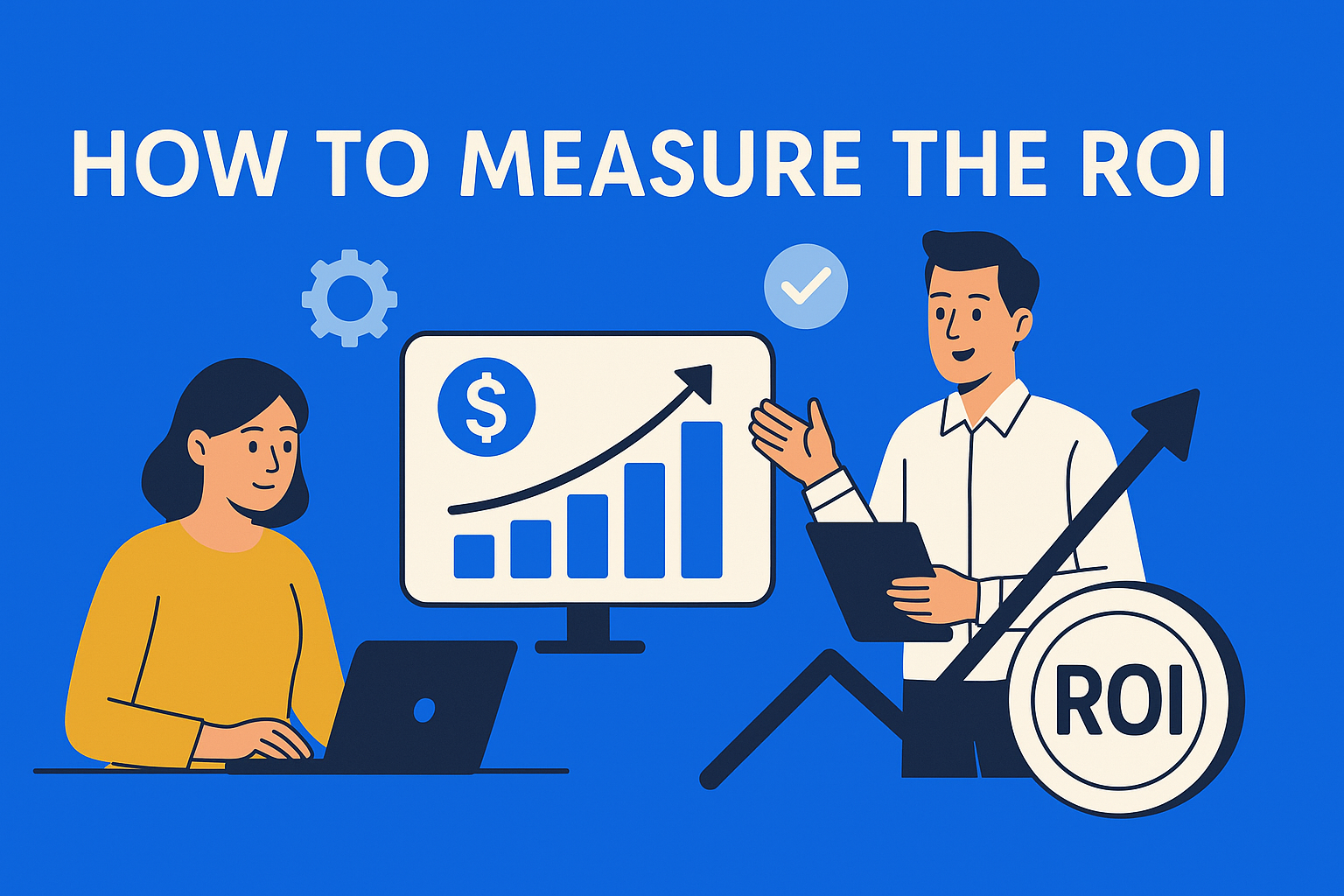How to Measure the ROI of Your Content Operations
Discover how to measure and boost the ROI of your content operations with clear frameworks, key metrics, and analytics tools. Perfect for content managers aiming to optimize performance, justify budgets, and align content with business goals.

In today's digital ecosystem, it is no longer enough to simply create high-quality content - the key lies in understanding how it contributes to business objectives and justifies the investment. Despite this, many content teams and managers still lack a clearly defined method for measuring the ROI of their activities.
This article provides a structured guide for understanding, tracking, and optimizing content operations ROI, using relevant metrics, tools, and strategies that can significantly improve decision-making within digital marketing.
Key Takeaways
ROI in content operations goes beyond profit-it's about strategic value across planning, creation, distribution, and performance.
Set SMART goals and link them to funnel-specific KPIs like visits, leads, and conversions to make ROI measurable.
Quantify both cost (salaries, tools, campaigns) and return (lead value, conversions) to apply a meaningful ROI formula.
Avoid vanity metrics-focus on business-driven analytics using tools like Google Analytics, HubSpot, and CRM integrations.
Improve ROI with SEO, automation, content repurposing, and continuous A/B testing to maximize both reach and returns.
What Does ROI Mean in the Context of Content Operations?
ROI (Return on Investment) represents the return on investment, but within the content marketing strategy, it means much more than just the ratio between input and output. In the context of content operations, ROI measures how effectively your system for planning, creation, distribution, and optimization of content contributes to achieving specific business results.
The basic formula for calculating ROI looks like this:
For example, if you invested $5,000 in content operations and the result was direct sales of $15,000, ROI equals 200%.
However, the real challenge lies in accurately mapping that "profit" to specific activities within the content teams.
Key Elements of Content Operations
To accurately measure ROI, you must clearly define all components of your content operations:
- Strategy (goals, target audiences, distribution channels)
- Content creation (texts, video, infographics, podcasts)
- Distribution (SEO, email marketing, organic and paid social)
- Team and tool management (CMS systems, communication, workflow)
- Analytics and optimization (metric tracking, A/B testing)
Each of these elements carries its own costs and contributions and must be included in the overall framework when measuring content strategy ROI.
Step-by-Step Guide: How to Measure Content Operations ROI
1. Define Goals
Without clear goals, every ROI calculation is mere speculation. Goals must be SMART: Specific, Measurable, Achievable, Relevant, Time-bound.
Example: "Increase the number of SQL leads from the blog section by 30% in the next three months." This goal enables later mapping of activities to specific outcomes.
2. Choose the Right Metrics
The metrics you measure depend on the stage of the customer journey:
- Top-of-Funnel (ToFu): number of visits, time on page, bounce rate
- Middle-of-Funnel (MoFu): number of lead magnet downloads, email sign-ups
- Bottom-of-Funnel (BoFu): number of conversions, sales, transaction value
To assess content performance more accurately, use tools such as Google Analytics, HubSpot, or ContentSquare.
3. Quantify the Value of Results
How do you know how much one lead is worth? By applying methods such as Customer Lifetime Value (LTV) and the average conversion rate, you can quantify the value of each step in the funnel.
Example: If 1 lead is worth $20, and you have 150 leads per month thanks to content, the monthly revenue you can attribute to the content team is $3,000.
4. Add Up All Costs
Content operations costs include:
- Salaries and fees (writers, designers, SEO specialists)
- Tools (CMS, email platforms, analytics)
- Paid campaigns (PPC, promoted posts)
- Management time and internal training
The total cost can be calculated quarterly for a better overview of seasonal fluctuations.
5. Calculate ROI
Once you’ve defined all input and output values, apply the ROI formula. For example:
- Investment: $6,000
- Profit (based on leads and sales): $15,000
This analysis shows that content activities brought in 1.5x more than what was invested, which is crucial information for decision-making in digital marketing.
Tools for Measuring ROI
There’s no precise ROI without quality tools. The following tools are especially useful for tracking the performance of content marketing campaigns:
- Google Analytics: Basic metrics on visits, bounce rate, user behavior
- HubSpot / Marketo: Lead attribution and CRM integration
- Ahrefs / Semrush: SEO performance and backlink ROI
- CoSchedule / ContentCal: planning, publishing, and engagement tracking
By combining these tools, you get a complete picture of the effectiveness of all content strategy phases.
Common Mistakes to Avoid
Many teams make the following common mistakes:
- Focusing on vanity metrics like likes and views instead of conversions and revenue
- Ignoring the time delay between content publication and sales
- Lack of UTM tags and poor analytics
- Underestimating costs (time, tools, overhead)
Fixing these mistakes is often the first step toward a realistic presentation of content marketing ROI.
How to Improve Content Operations ROI
ROI is not static - it can (and should) be improved through:
- A/B testing of titles, formats, calls to action
- Recycling successful blogs into newsletters, videos, social posts
- SEO optimization to ensure long-term organic reach
- Automation of distribution and metrics using AI tools and CRM integrations
A combination of quality and systematic optimization leads to greater and more measurable success.
Conclusion: From Strategy to Numbers
Measuring content operations ROI is not a luxury but a necessity. Through a systematic approach to goals, metrics, costs, and tools, you can clearly demonstrate the value that the content team brings to the company. More importantly, you can identify what works and what doesn’t and make better, more informed decisions based on that.
It’s time for content to stop being a "black box" and become a measurable investment. Start working on your ROI framework today.






